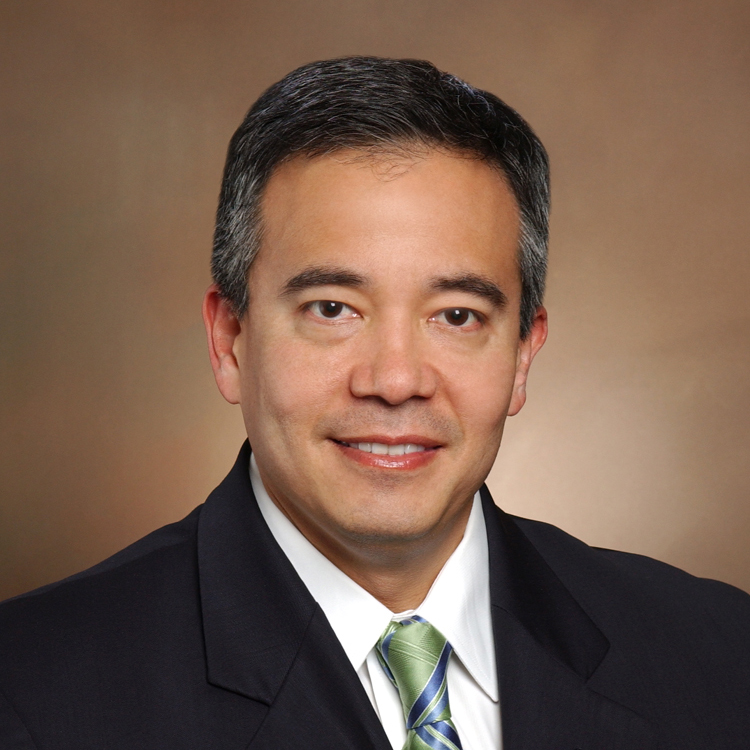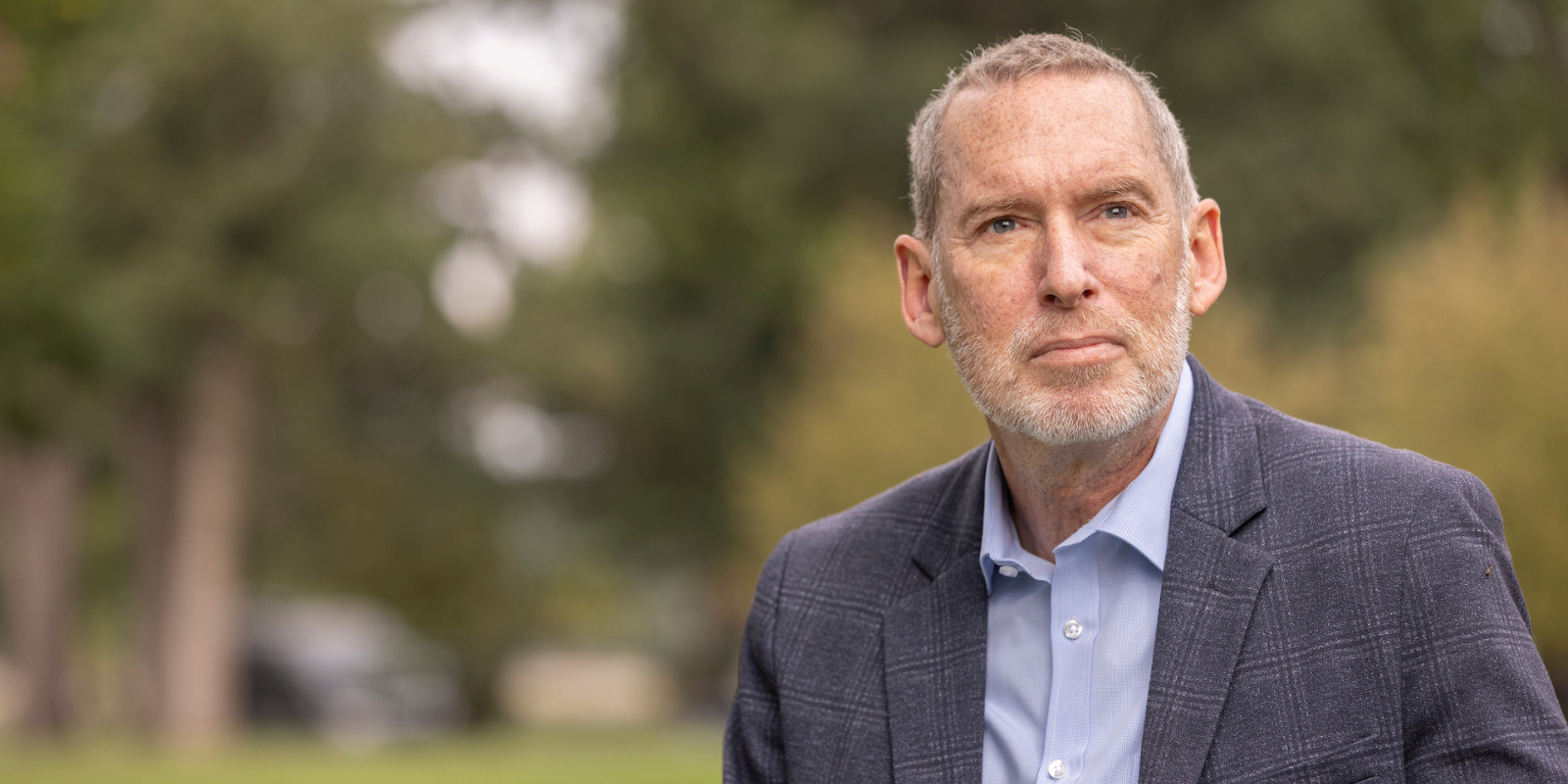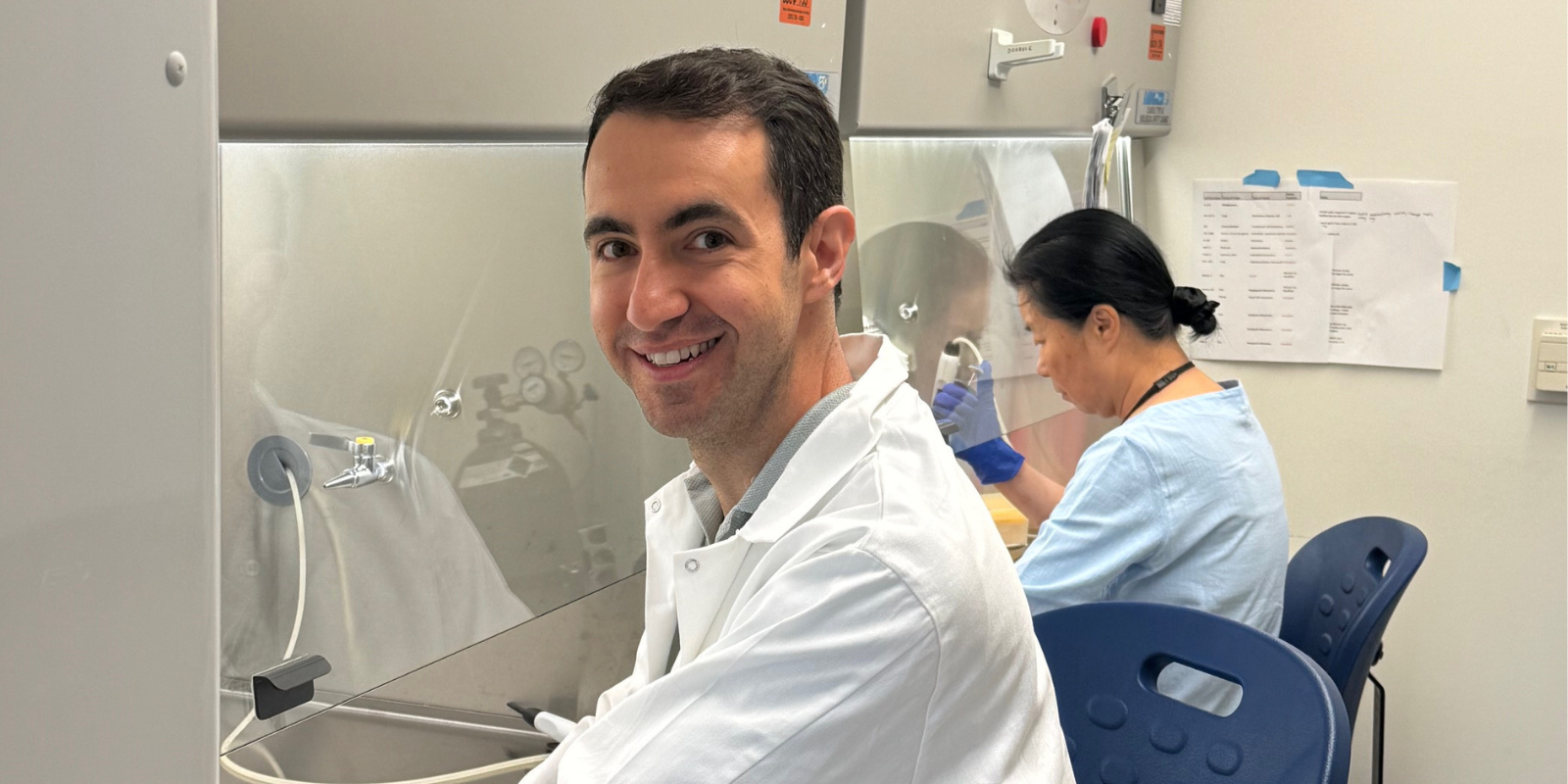Richard Schulick was born in Rangoon, Burma, the capital city of the country now known as Myanmar, where his father was stationed as a diplomat with the U.S. State Department. A coup d’état had recently installed a military government, and it was a relief, about a year after Richard was born, when Schulick’s father was transferred to a post in Thailand.
Schulick’s mother is Thai and the family often stayed with her brother, an obstetrician-gynecologist whose clinic was on the ground floor of the apartment-style building where he lived.
“That was my earliest exposure to medicine,” Schulick says. “There were four floors, with his clinic on the first floor, and when we walked in and out of his house, we would walk through the clinic.”
During his early childhood years, Schulick lived in Burma, Thailand, India, Philadelphia, and the Washington D.C. area, moving to the States fulltime for high school in Bethesda, Maryland. In his junior year of high school, Schulick applied for and won a scholarship with the American Heart Association, which included a summer research fellowship at the National Institutes of Health (NIH), where he was placed in the laboratory of Lance Pohl, PharmD, PhD, a pioneer in the study of immunology and auto-immune conditions. Schulick would end up working in the Pohl lab for the next six years, full-time in the summers and part-time while an undergraduate student studying Chemical Engineering at Johns Hopkins University.
“Lance got to know me pretty well and I remember him saying to me, ‘I’m a PhD and I love my job. But you – you want to be a physician!’” Schulick says.
What this early mentor meant is that while Schulick certainly had the mind of a scientist, he had the personality of someone meant to work with patients (no offense to CU Cancer Center basic researchers…).
Then, when Schulick was a sophomore in college, his father was diagnosed with metastatic colorectal cancer. Though his father traveled to Memorial Sloan Kettering Cancer Center in New York City to receive the best treatment of the time, it was not enough.
“No one hates cancer more than me,” Schulick says. With his father’s experience, Schulick’s path became clear: He wanted to work in oncology.
After undergrad, Schulick applied for and was accepted to John’s Hopkins School of Medicine. And after med school, he stayed at Hopkins to train in surgery. Most young surgeons transition directly from being a “junior” surgery resident to being a “senior” resident, but Schulick took two years between these steps to revisit the lab, working at the NIH Experimental Immunology Lab.
“My first faculty office wasn’t in a department of surgery, but in immunology,” Schulick says. In fact, he even earned NIH funding for his work in basic science, exploring how tumors evade the immune system and how the immune system could be retrained to recognize and attack tumor tissue.
The first use of immunotherapy against cancer was in the late 19th century when New York City surgeon William Coley noticed that his cancer patients who got infections after surgery actually tended to fare better than those that did not. Coley hypothesized that something about infection must work against cancer. Trying to replicate this effect, he developed and injected a slurry of killed bacteria called “Coley’s Toxins” into his cancer patients, which provoked an immune response that, as a byproduct, attacked any remaining cancer. But then during World War I, British researchers noticed that German mustard gas killed white blood cells and began to develop this chemical weapon as a treatment against leukemia… and in the excitement over what would become known as chemotherapy, immunotherapy was forgotten for nearly a century.
In 1991 when Schulick was postdoctoral fellow in immunology at the NIH, the field was just rediscovering the potential of cancer immunotherapy. Or, more accurately, the field as a whole continued to look down its nose at immunotherapy, while a handful of maverick researchers scraped for the funding they needed to drive the science forward.
“I always believed in cancer immunotherapy,” Schulick says. “I always saw the path forward.”
Now immunotherapy is a staple of treatment for many cancers. But even while his work in the lab started to gain acceptance, Schulick continued to hear the words of his early mentor, Lance Pohl: “You want to be a physician!”
After going back to finish his surgery residency at Hopkins, where he was mentored by John Cameron, MD (“Who trained about 30 current/recent Chairs of Surgery in the U.S.,” Schulick says), Schulick accepted a surgery fellowship at Memorial Sloan Kettering Cancer Center. While at Sloan Kettering, Schulick trained with Murray Brennan, MD and some of the same doctors that had treated his father 15 years earlier.
“They were incredibly compassionate physicians,” he says, “many of whom I ended up working with closely.”
Also while at Sloan Kettering, Schulick tracked down a sample of his father’s tumor, which had been preserved for research, and had it genetically tested to see if there was a hereditary component of his father’s cancer that might affect Richard, his brother, or their children. “It was squeaky clean,” he says. But cancer wasn’t done with his family: His mother was diagnosed with and successfully treated for breast cancer.
“My father’s cancer was a bad cancer caught at a late stage,” Schulick says. “My mother’s was a treatable cancer caught at an early stage.” Now 20 years after treatment, his mother remains cancer-free and Schulick says that his parents’ experiences help to frame his understanding of cancer diagnosis and treatment: “I don’t want anyone to have to be diagnosed with cancer,” he says. “But if you do have to be diagnosed, I would rather someone go through my mom’s experience and not my dad’s.”
From 1999 until 2012, Schulick was a surgical oncologist and faculty member at Sidney Kimmel Comprehensive Cancer Center at Johns Hopkins University, where from 2006-2012, he was Chief of the Division of Surgical Oncology. Through high school, med school, surgical residency, junior faculty and professional success, Schulick had effectively been at Hopkins.
Why, then, in 2012 did he accept the position of Chair of Surgery at the University of Colorado School of Medicine?
“In Colorado, I had the opportunity to build something. And as Chair of Surgery, I would have a much broader influence and the ability to accomplish big things in terms of taking care of cancer patients on a bigger scale,” Schulick says.
During Schulick’s time in Colorado, the CU School of Medicine, UCHealth’s University of Colorado Hospital, and the University of Colorado Cancer Center have seen tremendous growth, not just in prestige and national recognition, but in the metric that Schulick values most.
“Patients vote with their feet. If you look at how many more patients come to see us for our various services every year, it’s increased tremendously, 10-20 percent every year. It’s not just that the population of Colorado is growing; people who before might have gone out of state for treatment are realizing they can get the best treatment in the world, right here, and are choosing to stay.”
Along with what Schulick calls “an excellent trajectory” comes the ability to attract the best doctors and researchers.
“Whenever you have high performing hospitals and programs, in a city as beautiful as Denver and with surroundings as beautiful as Colorado, it’s relatively straightforward to recruit top talent here,” he says.
Still, “The beauty and the challenge is that there’s still much more to do,” he says.
As always, Schulick doesn’t set a low bar. “I want CU Cancer Center to have an impact on developing the next cures for cancer,” he says.
With these words, it’s easy to picture the pipeline of laboratory work, leading to drug design, leading to clinical trials, leading to the approval and wide use of new treatments against cancer, but for Schulick “curing” cancer goes beyond that. It also includes increasing access to care.
“In the end, you can build the best programs in the world, but if people can’t access them, you haven’t achieved your goal. Sometimes access has to do with socioeconomics, and other times
it means location, because, guess what, not everyone lives in Aurora. We’re here to serve the people of Colorado – all across Colorado! – and not just in Denver, Aurora and the Front Range,” Schulick says.
In addition to developing new treatments and increasing access to care, Schulick says that another goal is to “train the next generation of care providers, researchers and educators.”
In fact, this next generation includes two and perhaps someday three of his own children. Schulick’s eldest son is a 3rd-year medical student at the CU School of Medicine. His daughter recently graduated from NYU and is applying to med schools (“we’ll keep our fingers crossed,” he says). And his youngest son just started as a freshman at CU Boulder.
“CU Cancer Center is an organization that will help to eradicate cancer,” Schulick says. “How will the Cancer Center help eradicate cancer? One is prevention. Two is early diagnosis. Three is better treatments. Four is to make sure that everyone who needs these treatments gets them. All that is absolutely possible. The question is how many years it will take. I don’t know the answer, but I don’t want it to be 100 years or even fifty. Five to 10 years sounds about right to me.”
There is a goal. There is a roadmap that shows us how to get there. Under the leadership of Richard Schulick, CU Cancer Center will continue pushing forward toward this goal of eradicating cancer.




